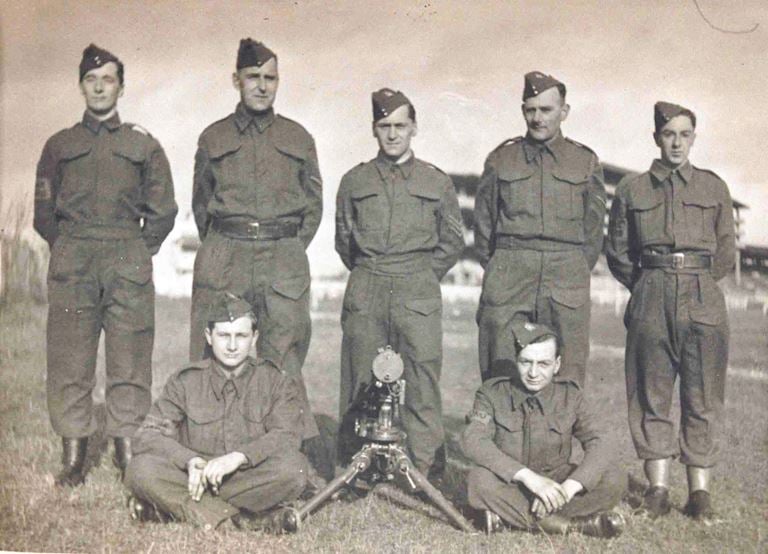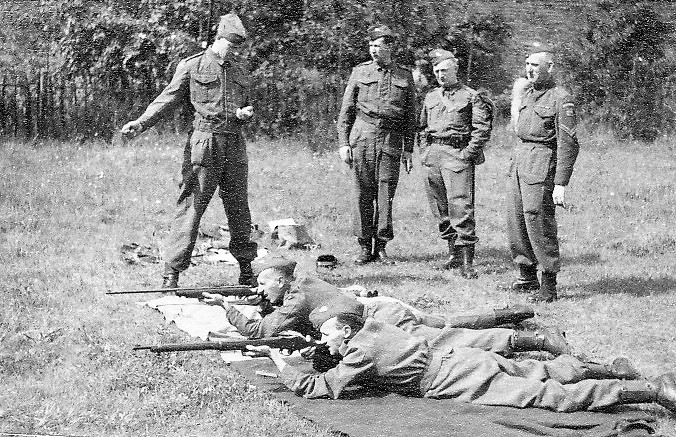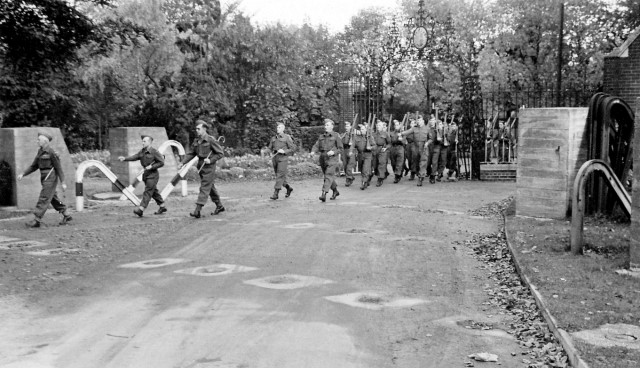This extract sourced from the Bourne Hall Museum describes how Epsom Downs Racecourse was transformed into a training ground for the Home Guard during the war.
'In May 1940, the Local Defence Volunteers (LDV) was established when a German invasion seemed imminent. It was open to men between the ages of 17 and 65 who were not involved in active service. Initially they were poorly equipped, wearing armbands with the letters LDV and their weapons consisted of privately owned guns, rifles and knives. In July 1940, at Churchill’s insistence, the LDV was renamed to the Home Guard. And since the official view was that the Home Guard should be considered as an important part of the armed forces, in the following months volunteers were gradually issued with uniforms, helmets and weapons with an initial focus on the most threatened parts of the country.
A week-end training school was eventually established in the Grandstand at Epsom race course in the summer of 1941 to train Home Guard from throughout the South West London area. The school was opened with an elaborate ceremony attended by senior officers from the armed forces and civilian services.

The Epsom & Ewell Home Guard training on the Downs. Image courtesy of Bourne Hall Museum.
The Grandstand at Epsom was used for thirteen training weekends (Friday evenings to Sunday evenings) during that summer. The annexe at the back was used for men’s dormitories while officers were accommodated in the Members’ Room. The 56th Battalion provided instructors and administration staff for this training school. Around 33 battalions attended the courses and all told some 130 officers and 3,500 other ranks undertook training at the school. Subjects covered included drills, tactics and grenade practice. In 1941, 5,000 Home Guard from the South-West London area participated in a “tank battle” on Epsom Downs where the Royal Tank Corps played the part of the enemy. As one of the Home Guard put it, “They (the tanks) would leave this country only in the form of scrap metal”.
The Grandstand was again the venue for weekend training in 1943. Home Guard companies from different battalions would take it in turn to set-up defensive positions in the Warren Wood – Langley Vale area. Men from the 56th Battalion would often play the part of the “enemy”.

Home Guard firearm training on the Downs. Image courtesy of Bourne Hall Museum.
The Battalion manned much of the Epsom section of the Outer London Defence Line which ran through Epsom to Drift Bridge. Since London would have been a major objective of any invasion, a system of defence lines was established around the capital.
Training continued for the duration of the war, even with victory in sight. In April 1944, the Epsom Advertiser reported that “German Paratroops” had landed on Epsom Downs and fought a fierce battle with the 56th Surrey Battalion. The raiders made their way to a number of railway bridges and thousands of rounds of blank ammunition were fired. A team of adjudicators declared that the “enemy” had succeeded in their mission of destroying vital communications but they had an advantage of knowing the area well!
Compulsory drills and training were discontinued in September 1944 and those operational duties still required were carried out by volunteers only. Over 1,000 men from the 56th Battalion assembled in Epsom College in October 1944 in what was to be their last big parade.

Battalion parade through Epsom. Image courtesy of Bourne Hall Museum.
The battalion then marched through Epsom and the parade concluded in Market Square.'
More in this series:
Epsom Wartime Stories from local members of the public:



